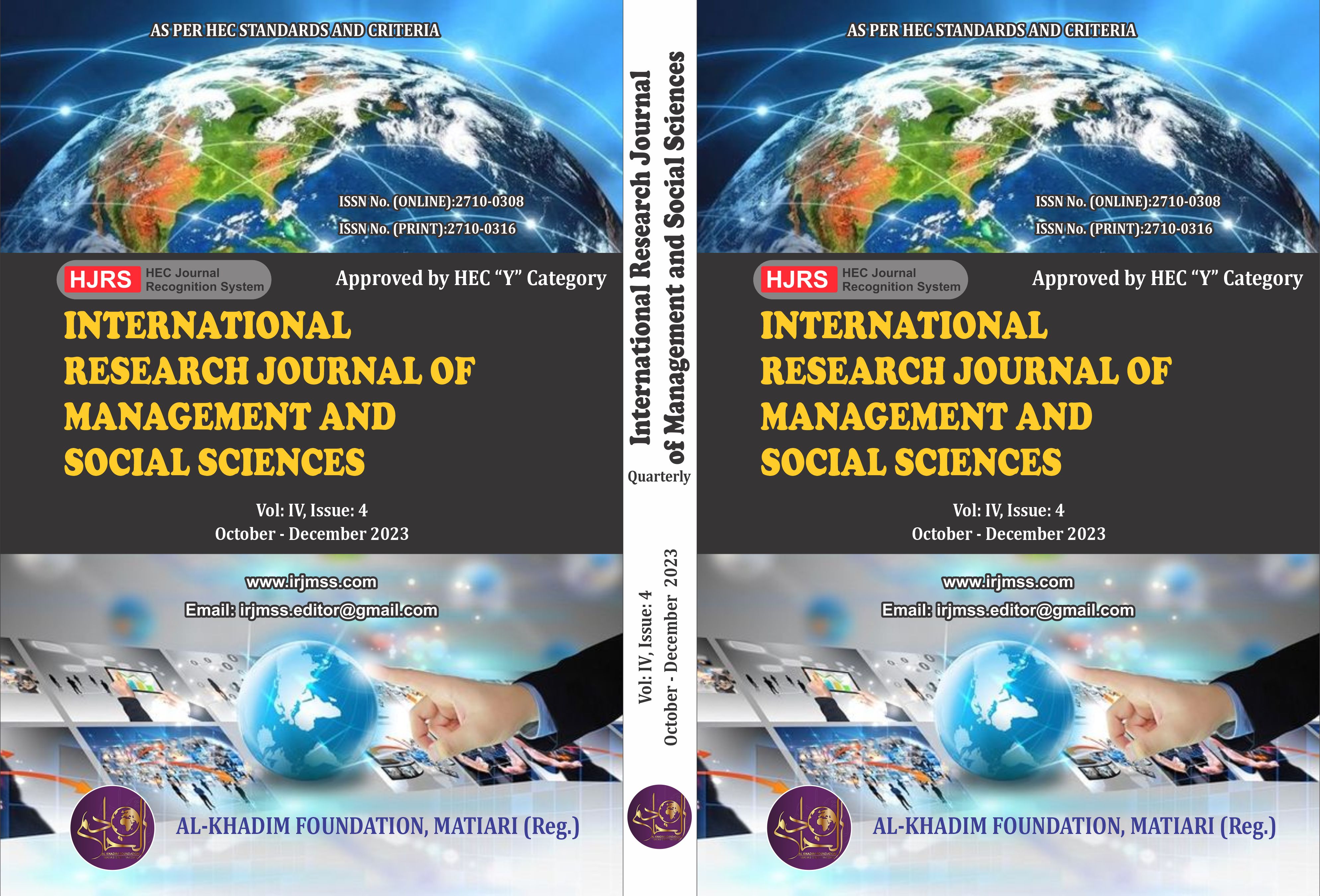Effects of 5E’s Instructional Model on Academic Achievement in 10th Grade Chemistry
Keywords:
Instruction, Model, 5E’s instructional model, academic achievement, ChemistryAbstract
The purpose of this experimental study was to find out Effects of 5E’s Instructional Model on Academic Achievement in 10th Grade Chemistry. The research design was true experimental in nature, based on the pre-test, post-test equivalent group design. The population of the study was comprised of all the students (boys) of 10th class studying at secondary level which were administered by Federal Directorate of Education, Islamabad. The sample of the study was consisted of 80 students taken from one boys’ school by simple random sampling technique. The sample was further divided into two equal groups by equating them on pre-test scores. One was served as control group while the other as experimental group. The experimental group was taught by 5E’s instructional model while control group by traditional teaching method. After the completion of eight weeks’ treatment, post-test was administered to both the groups. At the end, data were collected and analyzed. Mean, standard deviation and t-test were used for data analysing. Data were analyzed by applying t-test at .05 level of significance. The major findings of the study were that the overall academic achievements of experimental group in post-test taught with 5E’s instructional model enhanced significantly as compared to control group. The study also found significant increase in different aspects of cognitive domain of students’ learning; knowledge, application, comprehension and skill development abilities of experimental group taught with 5E’s instructional model.
References
Adams, G. L., & Engelmann, S. (1996). Research on Direct Instruction: 25 years beyond Distar. Seattle, WA: Educational Achievement Systems.
Adesoji, F.A. & Olatunbosu, S. M. (2008). Student, teacher and school environment factors as determinant of achievements in secondary school chemistry in Oyo State, Nigeria. The Journal of International Social Research Department of teacher Education, University of Ibadan, Nigeria. 3(1)12-17.
Atkin, J., & Karplus, R. (1962). Discovery of invention? Science Teacher, 29(5), 45 51.
Brown, P.L., & Abell, S.K. (2007). Examining the learning cycle. Science and Children; 44(5), 58-59.
Bulbul, Y. (2010). Effects of 7E Learning Cycle Model Accompanied with Computer Animations on Understanding of Diffusion and Osmosis Concepts (doctoral dissertation). Middle East Technical University Turkey. Available online at https://etd.lib.metu.edu.tr/upload/12612299/index.pdf.
Bybee, R.W. & Landes, N.M. (1990, February). Science for life & living: An elementary science program from the Biological Sciences Curriculum Study. The American Biology Teacher, 52(2), 92-98.
Bybee, R.W. et al. (1989). Science and technology education for the elementary years Frameworks for curriculum and instruction. The National Center for Improving Instruction. Washington, D.C.
Bybee, R. W., (1997). Improving Instruction. In Achieving Science Literacy: From Purposes to Practice. Porsmouth, N. H: Heinemann.
Bybee, R.W. et al. (2006). The BSCS 5E instructional model: origins, effectiveness, and applications. Colorado Springs: BSCS.
Ergin, İ. (2012). Constructivist approach based 5E model and usability instructional physics. Latin-American Journal of Physics Education, 6(1), 14-20.
Ewing, A. C. (2012). The Fundamental Questions of Philosophy (Routledge Revivals). Routledge.
Gloria, T. (2014). Effect of 5E’s Constructivist Instructional Approach on Attitude to Chemistry. MS Thesis. University of Nigeria, Nsukka.
Hanuscin, D., & Lee, M. H. (2008). Using the learning cycle as a model for teaching the learning cycle to preservice elementary teachers. Journal of Elementary Science Education (20)2, 51-66.
Hu, J., Gao, C., & Liu, Y. (2017). Study of the 5E instructional model to improve the instructional design process of novice teachers. Universal Journal of Educational Research, 5(7), 1257-1267.
Ibrahim, S.T. (2015). Impact of 5E Teaching Cycle on Attitude, Retention and Performance in Genetics among Pre- NCE Students with Varied Abilities, North-West Zone, Nigeria. P.h.D Thesis. Ahmadu Bello University, Zaria.
Jack, G. U. (2017). The effect of learning cycle constructivist-based approach on students’ academic achievement and attitude towards chemistry in secondary schools in north-eastern part of Nigeria. Educational Research and Reviews, 12(7), 456-466.
Khalid, A., & Azeem, M. (2012). Constructivist vs traditional: effective instructional approach in teacher education. International Journal of Humanities and Social Science, 2(5), 170-177.
Lawson, A. E. & Thompson, L. D. (1995). Formal reasoning ability and misconceptions concerning genetics and natural selection. Journal of Research in Science teaching, 25(9), 733-746.
Marek, E.A., (2008). Why the learning cycle? Journal of Elementary Science Education, 20(3), 63-69.
Njoku, Z.C. (2009). Enhancing curriculum delivery using science-technology society (S.T.S) approach. International Council of Association for science Education (ICASE), 30 (3)48-54.
Pane, John F. (2018). Strategies for implementing personalized learning while evidence and resources are underdeveloped. Santa Monica, CA: RAND Corporation.
Richards, J. A. (2015). Understanding theories of learning. International Journal of Multidisciplinary Research and Modern Education, 1(2), 343-347.
Sen, S. & Oskay, O.O. (2017). The Effects of 5E Inquiry Learning Activities on Achievement and Attitude toward Chemistry. Journal of Education and Learning, 6(1), 1-9.
Tanner, K. (2010). Order matters: Using the 5E model to align teaching with how people learn. CBE Life Sciences Education, 9(3), 159-164.
Twyman, J. S. (2016). Personalizing learning through precision measurement. In M. Murphy, S. Redding, & J. Twyman (Eds.), Handbook on personalized learning for states, districts, and schools (145–164). Philadelphia, PA: Temple University.
West African Examination Council (WAEC, 2005, 2006, 2008, 2010) Chief Examiners Reports, Senior school certificate Examinations May/June examinations.
Williams, P. 2019. “The Principles of Teaching and Learning in STEM Education.” AIP Conference Proceedings 2081(1).
Zakaria, E., Solfitri, T., Daud, Y. & Abidin, Z. Z. (2013). Effect of cooperative learning on secondary school students’ mathematics achievement. Creative Education, 4(2), 98-100.






